The ancient symbolism behind the male ear piercing has been overshadowed in the last few decades by misconceptions in pop culture and the theory of rumors. Just ten years ago, it was a common perception that if a man pierced one ear, he was gay. Like most perceptions, however, they rarely mimic reality and this is true for the male ear piercing as well. Men have been piercing their ears since before recorded history. In fact, men have been piercing their ears for much longer than women. In 1991, archaeologists discovered the mummified corpse of a man in a glacier in Austria whose ears had not only been pierced, but enlarged to a gage commonly seen in primitive indian rituals and in todays exploding industry of body modification.
History
The tradition of men wearing earrings dates far back in our ancestry to primitive Indian tribes. Facial piercings and jewelry were used as tools to modify the bodies in religious and cultural initiations and rituals. For many of these primitive Indian tribes, body modification is a symbol of age, status, wealth and standing within the tribe that is still used even today. In the 1920s, it became popular for sailors to pierce their ears based on superstition. Sailors believed that if their bodies were recovered after a sailing accident that the person would take the earring as payment for a proper burial, but pierced ears on sailors also represented a sailor who had sailed around the world or survived a sinking ship. Modern body modification has taken on a more literal sense of vanity. In the late 1960s and early 70s, hippies and homosexuals adopted the wearing of earrings and the taboo quickly turned into a fad, catching on in the celebrity community, with punk rocks bands and athletes beginning to pierce their ears as well.
Considerations
The wearing of earrings by men has brought about a few sex discrimination lawsuits in several states. In December of 2003, for example, a man named Michael Pacenka was fired from his job for refusing to remove an ear stud while working. The dress code of the Fairway Stores where Pacenka was employed, explicitly restricted the wearing of earrings on male employees, while allowing female employees to wear earrings. In Pacenka v. Fareway Stores, Inc. the Iowa Supreme Court found that the man was unable to sue on the basis of sex discrimination, because while the policy does seem to discriminate based on sex, is was not viewed as having a significant impact on the employee experience. While many organizations and businesses have since adopted new rules regarding appropriate grooming for male and female employees, some policies still include a bias against male ear piercing.
Types
The first types of earrings worn by men were typically made from carved wood, stone and ivory. Primitive Indian tribes often wore jewelry in their ears that resembled hooks or large bars with a sharp end. The earliest American earrings, worn by sailors, were often made of sterling silver and gold, and were shaped like hoops or studs. Today, there are a number of different types of earrings for men, ranging from classic studs and hoops to more elaborate forms of ear and facial modification. Gaged earrings, which create large holes, and the piercing of other parts of the ear, have grown in popularity in the last decade. Flesh tunnels and plugs are the most popular of the gaged earrings and require a large-gauge needle and subsequent stretching to create. Flesh tunnels allow you to see through the ear, while plugs are similar in width, but have solid jewelry plugging the hole. Modern and popular ear piercing techniques include, but are not limited to, the upper cartilage, tragus and the conch piercing.
Potential
While male ear piercings have been around for centuries, they did not reach the mainstream until the late 80s and early 90s. In 1982, Lou Gossett Jr., wore a diamond earring when he stepped on stage to accept his Academy Award for the movie "An Officer and a Gentleman.” Since then, there has been a strict following in the celebrity community, with stars like George Michael, Will Smith and David Beckham donning pierced ears. The popularity of ear piercing for men will only grow as the world begins to see it as an acceptable form of expression for both casual and formal affairs. With the advancements in the safety of body modification, coupled with the increased popularity and increased public tolerance, the male earring revolution has only just begun, expanding into a new arena of body modification that extends far beyond a small and delicate hole in the ear.
Misconceptions
As the hippie generation and homosexuals adopted the wearing of earrings in the late 60s, the trend quickly gathered a reputation for representing homosexuality. During this time, a common saying arose among the public that “left is right and right is wrong.” This saying was in response to the perception that piercing only the right ear meant that you were a homosexual. There were problems with this generalization, however, because it was often confused as to which ear was supposed to represent that a person was gay. Many people began to say that “right is right and left is gay”. This taboo remained true for many years, and while some male earring wearers may have used a single ear piercing as a symbol or code representing their sexual preference, it unlikely to have ever represented the majority opinion.
Related Articles

About Christian Men Wearing Earrings

The Significance of Earrings on Men

Reasons to Get a Nose Ring

Male Nipple Piercing Information

What Is the Meaning of Men Piercing ...

Tips for Men's Earrings

When Did Pierced Ears Originate?

What Is the Meaning of a Ring in the ...

Why Do People Pierce Their Ears?
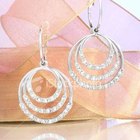
The Reason Women Wear Big Earrings
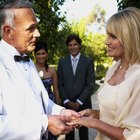
Why Does the Wedding Ring Go on the 4th ...

Why Do Men Wear Wedding Bands on Their ...

How to Remove Pierced Earrings From ...
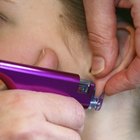
What Size Gauge Is an Ear Piercing Gun?

Different Body Piercings for Women
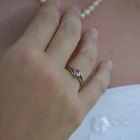
What Is the Meaning of a Ring on the ...

10 Reasons to Get a Nose Ring
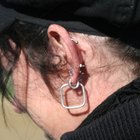
How to Gauge Your Ears with Tapers
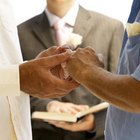
The Meaning of Exchanging Wedding Rings

How Do They Pierce Your Ears With ...
Writer Bio
Based in New York, Jillian Downer has been writing travel, fashion, and active lifestyle articles since 2004. Her work has appeared in "Travel + Leisure," "Outside Magazine," "Women's Health," "Footwear News," and "US News & World Report." Downer holds a Master of Arts in comparative literature from New York University.